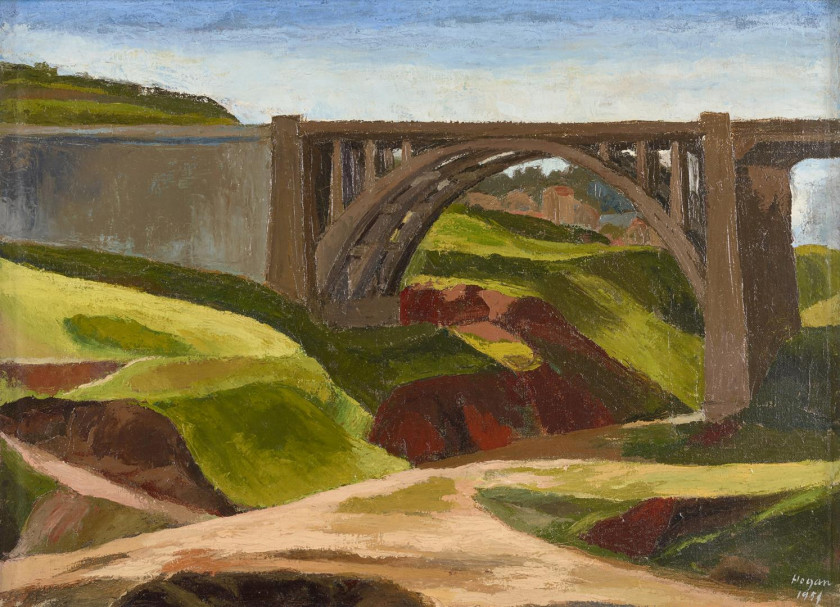Ponte sobre o Vale de Alcântara [Bridge over the Alcântara Valley]
painting


1951
Oil on canvas
73 x 100 cm
João Hogan developed a painting characterised by desertified landscapes with a marked telluric value, designed to express environments in which a metaphysical sense stands out in its relationship with nature and the total absence of human presence, even if we can identify in them signs or traces of that presence.
This work, which reflects his artistic identity, was conceived in a period of transition between an initial production more closely linked to the values of naturalism, and a later phase marked by a simplification of abstractionist tendency. Therein lies reflected the fascination that Cézanne's painting has always exerted on Hogan. In fact, this influence is recognised in the compositional construction, in which form, volume, surface, space, light, and shadows are modelled from a single plastic element: colour. This is how the green, earthy and ochre hills of the Alcântara valley are defined, in which the viaduct that seems to have always been part of the landscape stands imposingly. Pictorially marked by the plastic saturation, the monochrome composition is brought to life by the brilliance of the colours and the luminosity of the skyline, made up of overlapping layers of light shades.
Besides the evident Cézannian reference, the metaphysical and non-naturalistic dimension of this painting establishes João Hogan's connection with the poetics of other visionary and melancholic artists, including the Romantics who, focused on the search for the feeling of the sublime, paint unreal landscapes of a nature that is no longer terrestrial.
Joana Baião